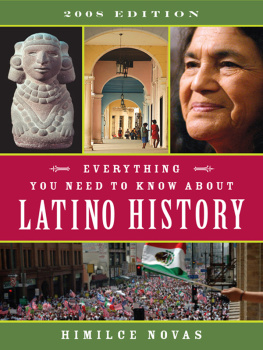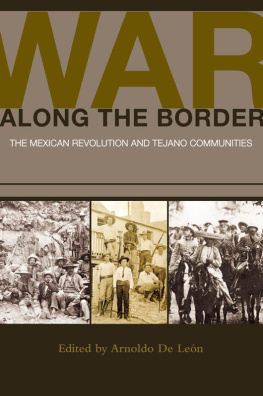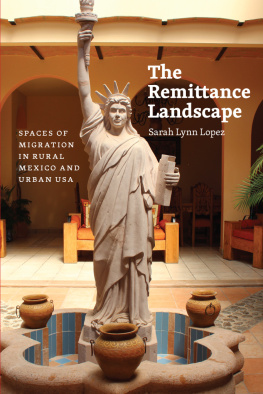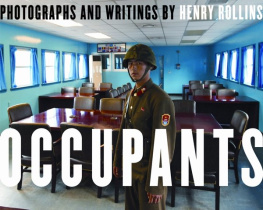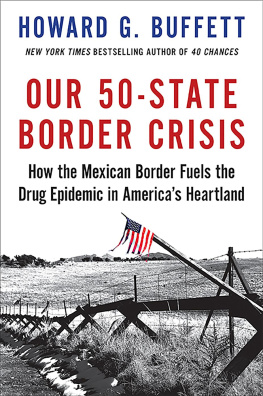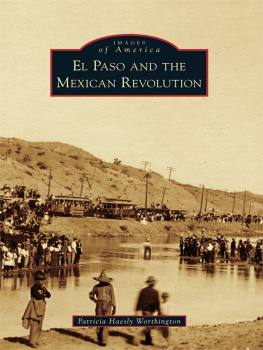
THE WILLIAM & BETTYE NOWLIN SERIES
in Art, History, and Culture of the Western Hemisphere
CURATING AT THE EDGE
Artists Respond to the U.S./Mexico Border
Kate Bonansinga
FOREWORD BY LUCY R. LIPPARD

UNIVERSITY OF TEXAS PRESS
AUSTIN
Copyright 2014 by Kate Bonansinga
Foreword copyright 2014 by Lucy R. Lippard
All rights reserved
First edition, 2014
Requests for permission to reproduce material from this work should be sent to:
Permissions
University of Texas Press
P.O. Box 7819
Austin, TX 78713-7819
http://utpress.utexas.edu/index.php/rp-form
Library of Congress Cataloging-in-Publication Data
Bonansinga, Kate.
Curating at the edge : artists respond to the U.S./Mexico border / by Kate Bonansinga ; foreword by Lucy Lippard. First edition.
pages cm (The William and Bettye Nowlin Series in Art, History, and Culture of the Western Hemisphere)
Includes bibliographical references and index.
ISBN 978-0-292-75297-9 (cloth : alk. paper)
ISBN 978-0-292-75443-0 (pbk. : alk. paper)
1. Artists and museumsMexican-American Border Region. 2. Art museum curatorsMexican-American Border Region. 3. Art museums and communityMexican-American Border Region. 4. Art and societyMexican American Border RegionHistory21st century. I. Title.
N72.A77B66 2013
707.5dc23 2013004243
The images on pages are Stanlee and Gerald Rubin Center for the Visual Arts, courtesy of the University of Texas at El Paso. All other images, unless otherwise indicated, are courtesy of the artist.
ISBN 978-0-292-75298-6 (library e-book)
ISBN 978-0-292-75299-3 (individual e-book)
doi:10.7560/752979
Contents
by Lucy R. Lippard
Foreword: Curating on the Cutting Edge
Lucy R. Lippard
Curating at the Edge is an intriguing hybrid, combining a manual on how to create a distinctive university art center with an informed critical text on art reaching across the U.S./Mexican borderand by extension over all borders. This is a book about process and collaboration on many frontsbetween curator and artists, artists and artists, university and curators, and cities and nations. Border as center is how Kate Bonansinga describes the institutional identity of the Stanlee and Gerald Rubin Center for the Visual Arts at the University of Texas at El Paso. Her searches for art that illuminates and expands that identity, the resulting artists proposals, and the intricate process of executing the installations are the core of her book. These artworks, each with its own set of problems and triumphs, reflect the shifting social dynamics of the border as it permeates further and further north and south, becoming a local/global nexus with reverberations across many other borders.
El Paso and Jurez are unique in their proximity within the most populated urban cluster on any border in the world. Sharing a population of around 1.4 million, they are separated only by the Rio Grande. Until around 2009, they were intimate sister cities. Then Jurez, thanks to rampaging drug cartels, official corruption, and ineffective governmental policies, was labeled the worlds most dangerous city, while El Paso remains one of the safest cities of its size in the world. Given this tragic contrast, the Rubin Centers ongoing collaboration with the Universidad Autnoma de Ciudad Jurez (UACJ)even when that beleaguered city was out-of-bounds to those UTEP students living in El Pasosurely meant a great deal to everyone on both sides of the river. In 2009, Tijuana-based Tania Candiani illuminated this relationship with Battleground, a performance on the hillside next to the art center. Students with helmets and weapons made from domestic objects (a sad reversal of swords into ploughshares) chose to be either Warriors or Defenders, protecting Jurez from Jurez. Originally planned to play across the border, it was live-streamed to Jurez and projected in the Rubin galleries.
The connection between curating and place, on the model of Californias groundbreaking Border Arts Workshop and inSITE, is one of the lessons this book has to offer. Nearly 80 percent of the UTEP student body is Mexican American; most belong to the first generation in their families to attend college. One thing that stands out about the artists and curators discussed here is their respect for these students. The art shown at the Rubin is as complex and challenging as anything exhibited in far better-funded and more prestigious institutions. Although the Rubin also presents smaller and more conventional art exhibitions, the choice of commissioned installations as the focus was a daring one. Even hanging neatly framed and delivered works can be a touchy business; installation art is far more complicated. For the artist it offers a way to try something new, complex, temporary, and sometimes place-specific. For the hosting institution it offers all kinds of out-of-the-box learning possibilities. For audiences and faculties unaccustomed to contemporary art, it offers new and brain-stretching experiences. For the students, it means regular participation in the construction of the innovative artworks, according to the Rubins mission: to become a laboratory for experimentation where visiting artists would be the researchers and UTEP students would be their assistants.
For the curator, it provides innumerable headaches. Bonansinga candidly discusses the evolution of an impressive number of very disparate worksthe aesthetic, financial, academic, and marketing decisions made over the decade in which she forged first the Rubin Center itself (when it opened in 2004 she was its only full-time employee) and then its remarkable exhibition program. She makes the challenges sound easy, admitting mistakes and disappointments, but the attentive reader can see between the lines. There are inevitably minor clashes as the curator tries to keep peace between project and budget, possibility and impossibility, while pursuing a shared vision of the completed work. Accounts of last minute mind-changing are common, throwing the best-laid plans into disarray. On the unpredictably organic growth of the SIMPARCH collective, Bonansinga remarks wryly: More people, more talent, and more chaos.
Above all, Bonansinga trusts artiststhe mark of a good curator. She is open, flexible, and follows her hunches. Amazingly, there are no disasters. Most of the artists selected for commissions were already nationally or internationally known. Only one, Adrian Esparza, was born and raised in El Paso (and resides there still), and one other (Margarita Cabrera, not shown at the Rubin, but accorded prime space in the book) is currently El Pasobased. The few Anglos are or have been residents of border states. Perhaps most surprising, given the potentially controversial subjects and images routinely selected for the Rubin, is that the UTEP administration trusted Bonansinga, supporting her stated intention to create spectacular exhibitions [by living artists], with minimal resources. Partnerships like that between the curator and UTEP president Diana Natalicio are rare.
The Rubins program is remarkable in its consistent challenges to the status quo and its consistent ventures into social and political issues illuminated by cutting edge contemporary art. The titles of works presented at the Rubin and elsewhere by Alejandro Almanza Pereda reflect the risk-taking flavor of the program itself: Just Give Me a Place to Stand, The Heaviest Baggage for the Traveler is the Empty One, The Fan and the Shit, Andiamo, Stand Clear
Next page

